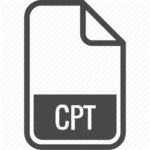What is a Spine CT?
A computerized tomography (CT) scan combines a series of X-ray images taken from different angles around your body and uses computer processing to create cross-sectional images (slices) of the bones, blood vessels and soft tissues inside your body. CT scan images provide more-detailed information than plain X-rays do.
When looking at the spine, the xray beam is directed the specific area of spine being ordered by the physician (Cervical, Thoracic, Lumbar).
Why do I need a Spine CT?
A Spine CT is a useful tool for detecting a number of conditions, including:
- Herniated disks
- Lesions/ Tumors
- Injuries
- Structural anomalies
- Blood vessel malformations
- Abnormal prior scans
Your doctor may also order a Spine CT to investigate symptoms such as:
- Pain
- Numbness, tingling, burning in extremities
- Weakness
- Post surgery
- when MRI is contraindicated
- other reasons
How do I prepare for a Spine CT?
The medical staff will need to know if you have any metal (foreign or surgical) in your body, because CT uses ionizing radiation and metal may obscure certain anatomy.
If you’re wearing anything that contains metal that is in or around the area of concern, you will be asked to remove it.
Tell the medical staff if you’re pregnant. Radiation can potentially pose harm to the fetus. Your doctor will decide on a risk vs benefit basis whether you should have a CT when you are pregnant.
How is a CT performed?
Computed Tomography, also known at CT or cat scan, refers to a computerized xray imaging procedure. A narrow beam of xrays is aimed at the patient and then rotated around them as they travel through the machine. These xrays produce a signal processed by the machines computer to generate cross sectional images –or slices- of the body. A CT scan can be compared to looking at one slice of bread within a whole loaf.
Once the scanner acquires its images, it transmits them to the operator’s computer, where the data is prepared into a 2 dimensional image of the body part and displayed on the screen. From there, the technologist can create reconstructions of the images that help the radiologist better diagnose any abnormalities.
At times, your physician may request the exam include the use of contrast dye. This dye (iodinated) helps show certain structures more clearly. This dye is contraindicated if you have had an allergic reaction to it before, if you have decreased kidney function or are in renal failure, and if you have an allergy to iodine and/or shellfish. If you have a known contrast allergy, you should make sure to alert the doctor and technologist beforehand. Some medications can reduce reactions. This dye will sometimes make you feel hot and/or make you feel like you have wet yourself, but is usually just a warm pressure you may get for a few seconds, and quickly goes away. In most instances, the physician or imaging center will request that you abstain from eating or drinking for several hours prior to your exam.
For a CT of your spine, you will lay on your back. The table will slide in and out of the machine several times. You may be asked to hold your breath for a few seconds.
What happens after my CT?
After the test, you can get dressed and leave the testing facility.
A radiologist will analyze your CT images and provide your doctor with the results. Next steps will depend on whether the results revealed anything unusual or discovered the cause of any abnormalities.




